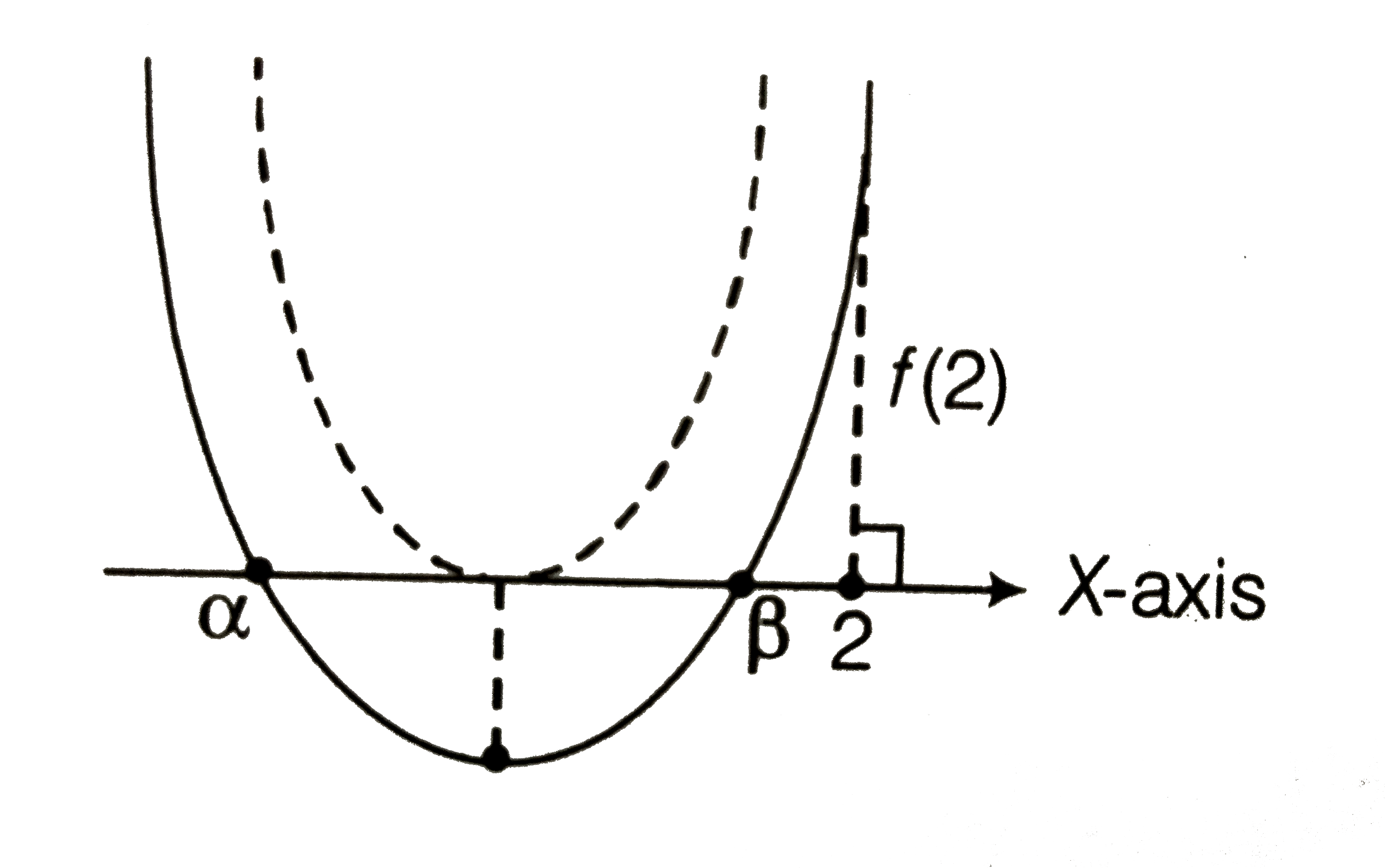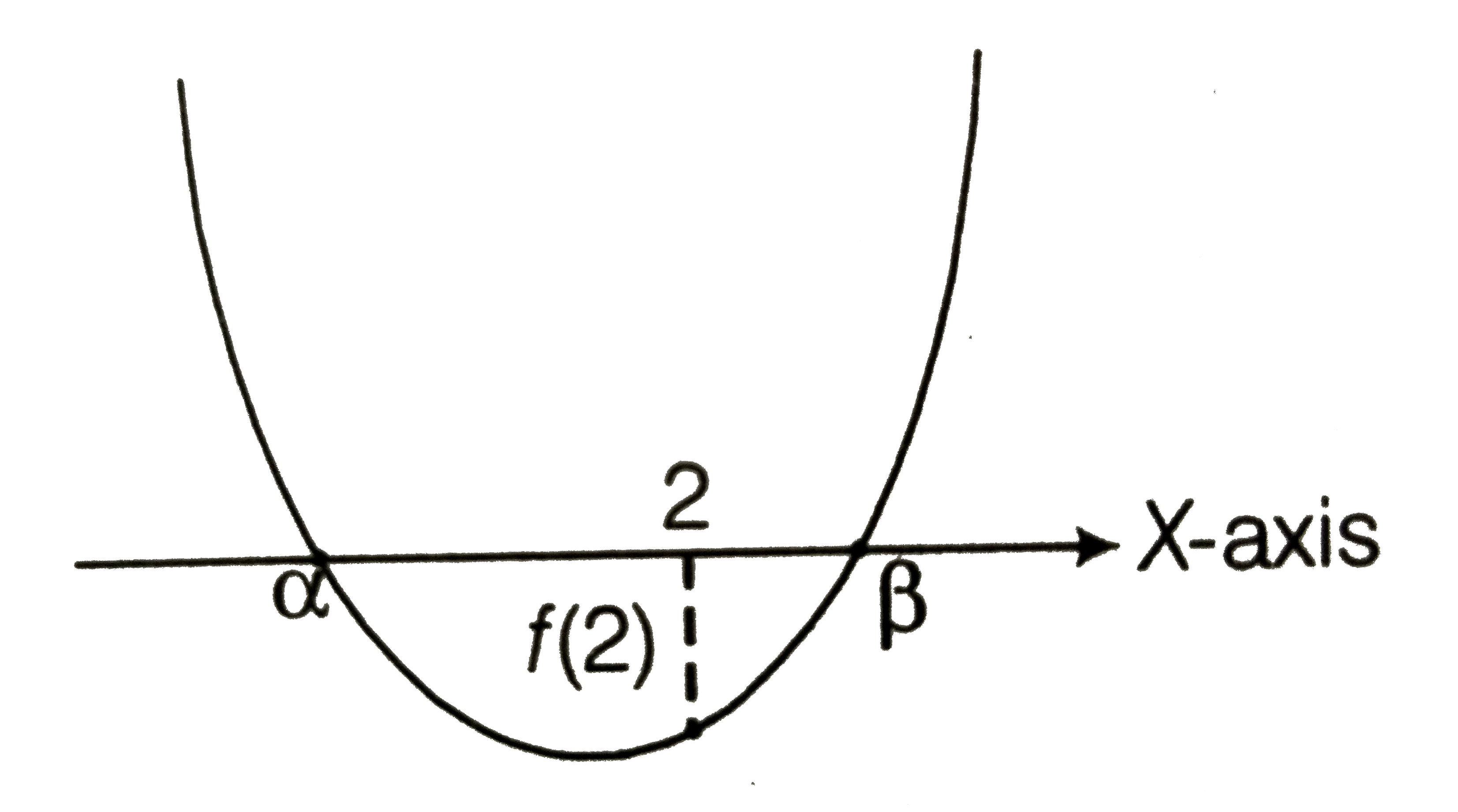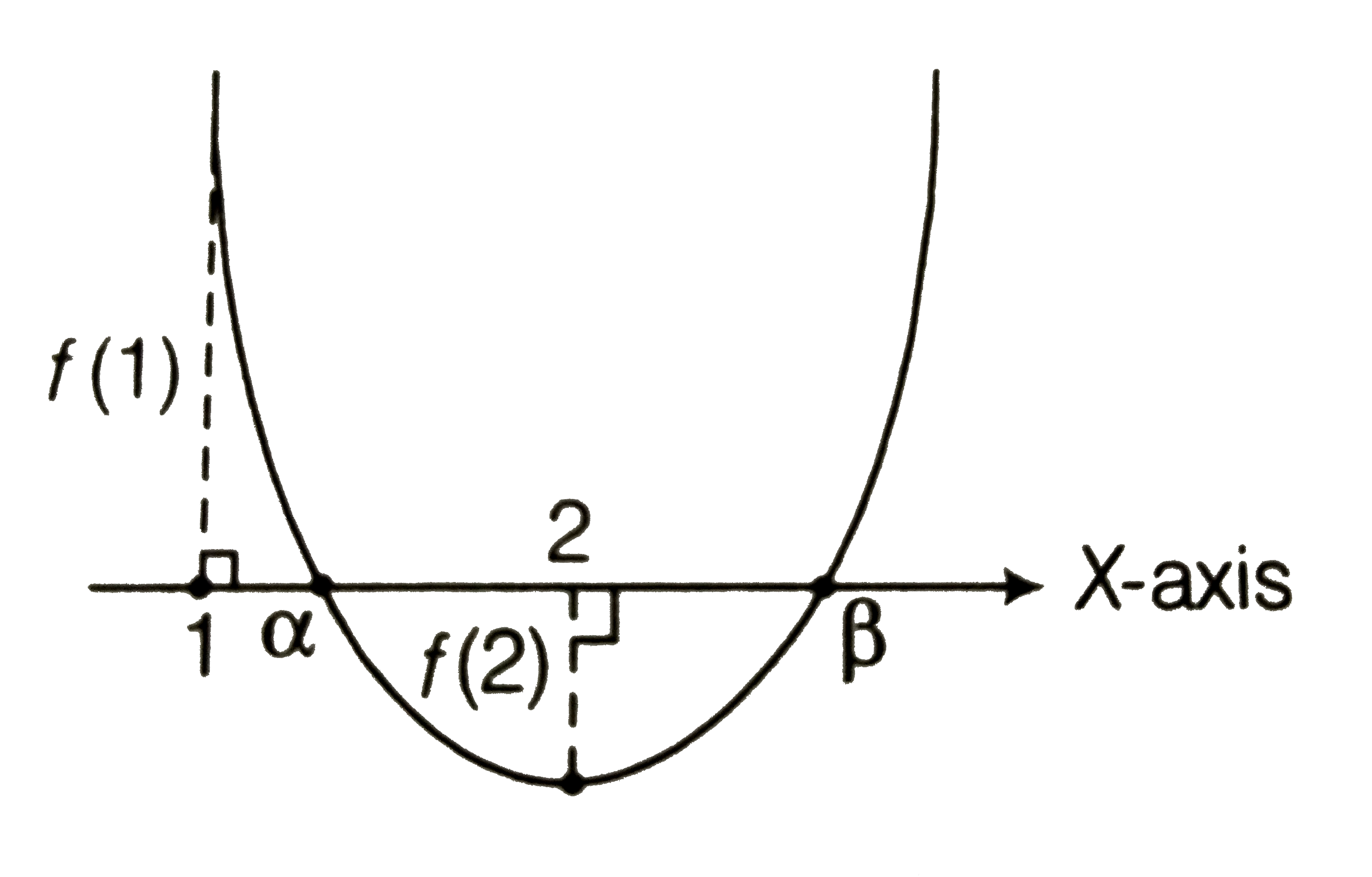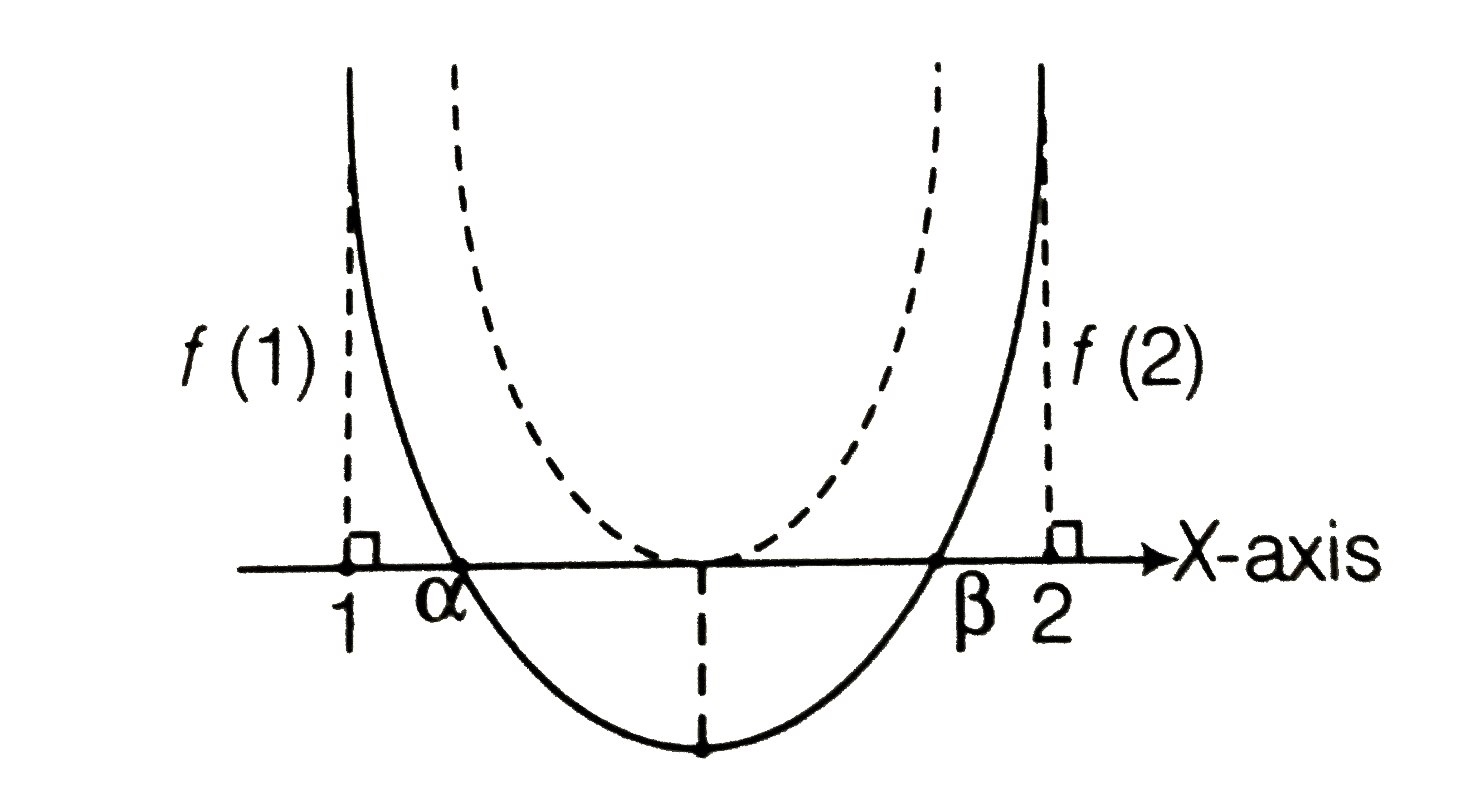Let be a quadratic equation . Find the values of m for which the roots are:
(ix)one root is smaller than 2 & other root is greater than 2
(x) both the roots are greater than 2.
(xi) both the roots are smaller than 2.
(xii) exactly one root lies in the interval (1,2)
(xiii) both the roots lies in the interval (1,2)
(xiv) at least one root lies in the interval (1,2)
(xv) one root is greater than 2 and the other root is smaller than 1Solution in Gujrati
Let
Here
and
and -x coordinate of vertex
(i) Both the roots are smaller than 2

i.e.
............i
i.e.
......ii and - coordinate of vertex
i.e.
iii
On combining Eqs.i,ii, and iii we get
(ii) Both the roots are greater than 2

i.e.
.........i
i.e.
......ii
and x-coordinate of vertex
i.e.
.....iii
On combining Eqs. i, ii and iii we get
(iii) One root is smaller than 2 and the other root is greater than 2

i.e.
....i
i.e
....ii
On combining Eqs i and ii we get
(iv) Exactly one root lies in the interval (1,2)

i.e.,
...i
....ii
On combining Eqs (i) and (ii) we get
(v) Both the roots lie in the interval (1,2)

i.e.
...i
i.e.
.ii
i.e.
..iii
coordinate of vertex
i.e.
or
.iv
On combining Eqs. i,ii,iii and iv we get
(vi) One root is greater than 2 and the other root is smaller than

i.e.
.i
i.e. which is not possible.
Thus , no such exists.
(vii) At least one root lie in the interval (1,2)
Case I Exactly one root lies in (1,2)
[from (iv) part]
Case II Both roots lie in the interval (1,2).
(viii) Atleast one root is greater than 2
Case I One root is smaller than 2 and the other root is greater than 2.
Then, [from iii) part]
Case II Both the roots are greaters than 2 then .
Hence atleast one root is greater than 2.
or
Similar Questions
f(x)=x2−(m−3)x+m=0 is a quadratic equation, find values of m for which
one root is smaller than 2, other root is greater than 2
View SolutionLet x2−(m−3)x+m=0(m∈R) be a quadratic equation, then find the values of 'm' for which both
(a) the roots are greater than 2.
(b) both roots are positive,
( c) one root is positive and other is negative.
( d) One root is greater than 2 and other smaller than 1
( e) Roots are equal in magnitude and opposite in sign,
( f) both roots lie in the interval (1, 2)
View SolutionLet x2−2(a−1)x+a−1=0(a∈R) be a quadratic equation, then find the value of 'a' for which
(a) Both the roots are positive
(b)Both the roots are negative
(c) Both the roots are opposite in sign.
(d) Both the roots are greater than 1.
(e)Both the roots are smaller than 1.
(f) One root is small than 1 and the other root is greater than 1.
View Solutionfor what values of m, the equation 2x2−2(2m+1)x+m(m+1)=0,m∈R has
(i) Both roots smallar than 2 ?
(ii) Both roots greater than 2 ?
(iii) Both roots lie in the interval (2,3) ?
(iv) Exactly one root lie in the interval (2,3) ?
(v) One root is smaller than 1, and the other root is greater than 1 ?
(vi) One root is greater than 3 and the other root is smaller than 2 ?
(vii) Roots αandβ are such that both 2 and 3 lie between αandβ ?
View SolutionLet x2−(m−3)x+m=0,(m∈R) be a quadratic equation. Find the values of m for which the roots are
one root is smaller than 2 and the other root is greater than 2
View SolutionLet x2−(m−3)x+m=0,(m∈R) be a quadratic equation. Find the values of m for which both the roots are greater than 2.
View SolutionLet x2−(m−3)x+m=0,(m∈R) be a quadratic equation. Find the values of m for which both the roots are smaller than 2.
View Solution
